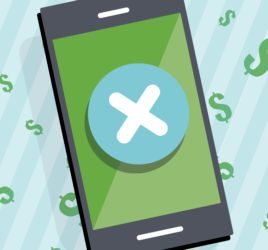
To Rebrand or to Refresh?
That is the question. Now, let’s talk about the difference between the two.
A refreshed brand should remain a visual connection to the original brand, but dive deeper into the audience, voice, and products. The reason behind a refresh shouldn’t be to keep up with current design trends. It’s more than updating colors and shapes within a logo. It should elevate the brand, while holding true to that brand’s core identity and character. A refresh is appropriate when you want to retain the brand’s values, but open up opportunities to other aspects of business or outreach.
- Google is great example of a brand refresh. In 2015, Google revamped their brand, giving it a modern look that spoke to its evolving audience. The 1999 serif font was old looking, disproportionate and something that no longer represented such a cutting edge and exciting brand. The Google logo has always been clean, friendly, and approachable. They wanted to retain those characteristics, by keeping the tilt in their “e” and multi-colored quirkiness. However, they needed to bring the mark into the 20th century. The new round, sans serif letterforms show movement and evolution, something that’s at the core of Google’s brand.
A rebrand is a more drastic change. It’s a halt in the current brand, a complete redesign of what the brand stands for and how it is represented. You will lose any brand equity and loyalty that you currently have, with the hopes of creating a better, stronger brand. A surprising factor to some, is that you can keep the logo, and still redefine the entire brand with messaging, imagery, and delivery. I will add that it requires a bigger budget and a longer timeline. It is the right decision though when your brand is no longer able to survive as it is.
- Apple is an example of a successful rebrand that didn’t drastically modify its logo. In the early 1990’s Apple was suffering from low sales, low customer interest, and tons of competition. It didn’t stand out in the market place, because the brand itself didn’t stand for anything unique. When Steve Jobs took back over the company in 1997, he focused on a minimalistic and modern approach, and a series of marketing campaigns that focused on user experience instead of products or purchases. At the time, technology was typically a man’s interest and fashion was women’s. But he combined the two by creating beautiful and imaginative products, packaging, and advertising. Apple was able to create a diverse customer base and show the world that it was not just a computer company, but a product innovator.
So now you might be thinking, I need a rebrand or refresh too. You don’t have to be Google or Apple to make a large impact on your audience. Think broader about your brand and how it affects your public appearance, outreach, or profitability.
Here at MurphyEpson, helping clients think through this process and identify the best route to elevate their brand is our expertise. Contact us to start the conversation and bring your brand into the new year.




